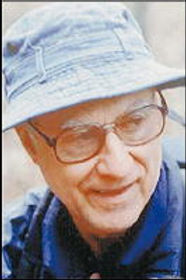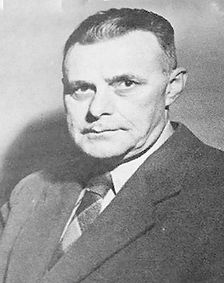Growing up in rural Knox County, Tennessee, I never realized until years later how my parents unintentionally exposed me to some of the region’s greatest journalists of that era.


Our home was filled with numerous publications to which they subscribed. There was the local newspaper, of course, the Knoxville News-Sentinel. Then there were several farm-related publications, such as Tennessee Farm Bureau News, Tennessee Farmer, and Progressive Farmer. And there were several religious periodicals.
Within each of those publications were several columnists of note–Don Whitehead, Carson Brewer, Bert Vincent, and Pettus Read, to name a few.
My exposure to these writers began with my overhearing my parents reading excerpts to each other.
“Hey, Ralph, did you read what Bert Vincent said this man uses to keep slugs from his tomato plants?”
“No, what’s he say?”
What followed would be a snippet from Bert’s column, or from that of one of the other journalists they read. Sometimes informative. Sometimes funny. Always interesting.

I was in upper elementary or junior high school when, after having just read Don Whitehead‘s The FBI Story, I learned that he wrote a regular column for the News-Sentinel, and I became a faithful reader. Knowing my enjoyment of his columns, Mother even cut out some of them and mailed them to me when I was attending college out of state. She continued to do so even after I was married and living in Pennsylvania.
I especially remember a column in which Whitehead spun a purely fictional tale of a man named Mostel Doctors whom some manufacturer paid big bucks to use his name in the firm’s advertising: “Mostel Doctors recommends (name of product).”
He and the manufacturer made a lot of money that way, and word soon spread to other businesses’ ad departments. Requests poured in for the right to use Doctors’s name in other firms’ ad campaigns. Before long, the ad writers modified both the spelling of the verb and the man’s name: “Most Doctors recommend (product name).”
Well, so many readers believed Whitehead’s fictionalizing that a few weeks later he was forced to issue another column titled “On the Fine Line Between Fact and Fiction,” explaining his use of a vivid imagination and revealing the gullibility of many of his readers.
But Whitehead’s initial fame came not from his column or fiction writing but from his reporting as a war correspondent. After working for the Lafollette Press, the Harlan, Kentucky, Daily Enterprise, and as a columnist for the Knoxville News-Sentinel, Whitehead worked for the Associated Press, covering World War II. He also covered the Korean War. I’ve written about Whitehead and other war correspondents in an earlier blog post (https://www.dennislpeterson.com/post/they-covered-the-war-and-more).
Whitehead was the recipient of the 1950 George Polk Award for wire service reporting and Pulitzer Prizes in 1951 and 1953, the latter being for “The Great Deception,” covering president-elect Dwight Eisenhower’s secret trip to the Korean front. Whitehead authored eight books, including The FBI Story, Border Guard: The Story of the United States Customs Service, and Combat Reporter (posthumously).
Carson Brewer was for forty years a columnist for the News-Sentinel. He quickly gained a reputation as a leading promoter of conservation of East Tennessee’s natural wonders, especially the Great Smoky Mountains. He wrote one of the first and most comprehensive histories of the Little Tennessee River Valley, Hiking in the Great Smoky Mountains, and a history of the Tennessee Valley Authority titled Valley So Wild: A Folk History.

Brewer had been born in Hancock County, Tennessee, and attended Maryville College for two years before joining the Army and serving in Europe during World War II. He later attended the University of Tennessee, but illness prevented his obtaining a degree. Instead, he began writing for the News-Sentinel, covering city hall and the court house.
He described himself as a “meanderer,” writing on a variety of topics, all of regional interest. His columns ranged from descriptions of Appalachian autumns to preservation of natural resources to vegetable growing–and everything in between. He was a master storyteller.
His numerous awards included the 1974 Golden Press Card Award, the 1978 UPI award for his column on sourwood honey, and the 1984 Tennessee Conservation League’s Z. Cartter Patten Award. In 2023, following Brewer’s death, the Tennessee General Assembly passed a resolution honoring his memory.

Another of my favorite columnists was Bert Vincent, who was born in 1896 in Bee Springs, Kentucky, graduated from Kentucky State Normal College, and was a World War I veteran. He began writing for the News-Sentinel in 1929. About four years later, he began writing the column for which he is now most famous, “Strolling with Bert Vincent.”
In “Strolling,” Bert wrote about a plethora of subjects, from folklore to simple living, from recipes and superstitions to vegetable growing. He promoted numerous charitable efforts and suggested what became the now-famous (or infamous, depending on one’s taste buds) Ramp Festival.
The extent of Bert’s influence is evidenced by the Bert Vincent Memorial Library at Lincoln Memorial University in Harrogate, Tennessee, and his induction into the University of Tennessee’s School of Journalism and Electronic Communication Hall of Fame.

Finally, and most recently, there was Pettus Read. He is the editor of the Tennessee Farm Bureau News, Director of Communications for the Tennessee Farm Bureau Federation, author of the column “Read All About It,” and, most recently, the District 8 Commissioner in Rutherford County, Tennessee.
Everything about Read promotes agriculture and the rural lifestyle. His column, which is published in more than 50 newspapers, is a mixture of agricultural news and promotion and homespun humor. I especially enjoyed the columns that featured “Uncle Sid and Aunt Sadie,” who always had some “good ol’ common-sense advice” for the readers’ benefit.

After we moved from Tennessee to South Carolina, one of the things I missed most was reading Read’s column in the Tennessee Farm Bureau News. Seeking to alleviate my withdrawal symptoms, I googled his column one day and learned that he had compiled a little book of some of his writings. I ordered Read All About It: A Rural Psychology Primer and, when it arrived, devoured it in one sitting.
“Rural farm life had its challenges,” he wrote in the preface, “but those bumps in the road presented opportunities and rewards that may not have been mine if my life had begun elsewhere. People who were just what you saw shaped my growing up. Family ties were everything, and good morals were expected. . . . An active imagination is something I have possessed all my life, and being bored was never allowed around our house.”
Both Read’s book and all of his columns are filled with what he calls “rural psychology” applied to everyday situations. That philosophy reflects how he and I were reared, and those principles are as good today as they were then.
What about you? Which authors did you read in your youth whose writings have affected your own life’s direction and principles? Be sure to share them in the comments.





















 Examples of this phenomenon abound all around us. This is no reflection on the utility or value of the products or services of such companies. It’s no reflection on the creative ingenuity of the firms’ marketing gurus. But it is a reflection of why otherwise educated kids grow into adults who can’t spell or write correctly. With so many bad examples surrounding them, the wonder is that they can spell and write as well as they do!
Examples of this phenomenon abound all around us. This is no reflection on the utility or value of the products or services of such companies. It’s no reflection on the creative ingenuity of the firms’ marketing gurus. But it is a reflection of why otherwise educated kids grow into adults who can’t spell or write correctly. With so many bad examples surrounding them, the wonder is that they can spell and write as well as they do! I think back to my mother’s handwriting. Neat. Legible. Even artistic. Even when she was scribbling her grocery list in a hurry, her handwriting was still clearly legible. Certainly better than mine when I took my time. And that seems to have been a characteristic of her entire generation, at least for the women but also for many of the men. And the key is that they were TAUGHT to practice good handwriting! It didn’t just happen. Typically, it was either the Palmer or the Zaner-Bloser technique they learned. And it stayed with them. Distinctive, artistic, and legible to the very end!
I think back to my mother’s handwriting. Neat. Legible. Even artistic. Even when she was scribbling her grocery list in a hurry, her handwriting was still clearly legible. Certainly better than mine when I took my time. And that seems to have been a characteristic of her entire generation, at least for the women but also for many of the men. And the key is that they were TAUGHT to practice good handwriting! It didn’t just happen. Typically, it was either the Palmer or the Zaner-Bloser technique they learned. And it stayed with them. Distinctive, artistic, and legible to the very end! A rule of education is that you will get from students what you reward. If you reward a particular behavior, it gets repeated. If you pay attention to the guy who’s goofing off just to get attention, he’ll keep doing it. If you honor and reward good spelling and handwriting, students will soon pick up on that and begin to spell and write well.
A rule of education is that you will get from students what you reward. If you reward a particular behavior, it gets repeated. If you pay attention to the guy who’s goofing off just to get attention, he’ll keep doing it. If you honor and reward good spelling and handwriting, students will soon pick up on that and begin to spell and write well. When was the last time you wrote a thank-you note or letter? By hand? How is your own spelling? We must set the example. People will know we’ve taken the time and made the effort to express our thoughts. At least they’ll be able to read them! Moreover, something handwritten is something that might actually be cherished and saved. That text message or e-mail will soon be deleted and forgotten.
When was the last time you wrote a thank-you note or letter? By hand? How is your own spelling? We must set the example. People will know we’ve taken the time and made the effort to express our thoughts. At least they’ll be able to read them! Moreover, something handwritten is something that might actually be cherished and saved. That text message or e-mail will soon be deleted and forgotten.
